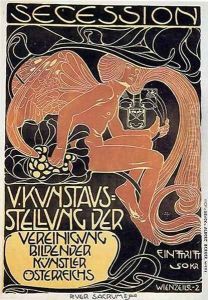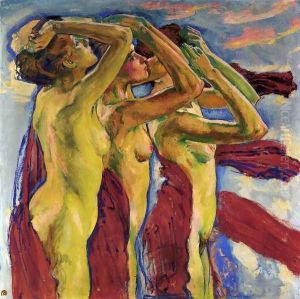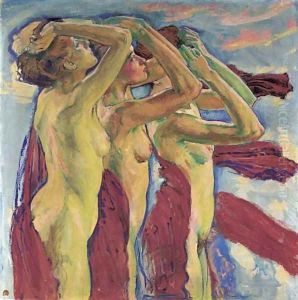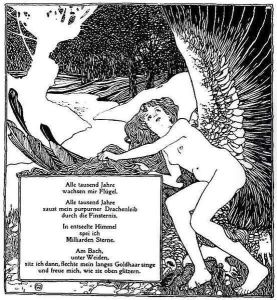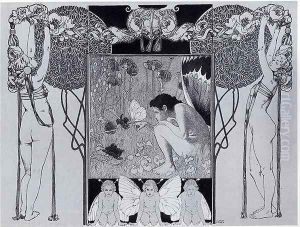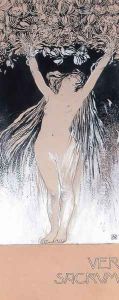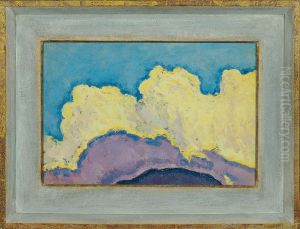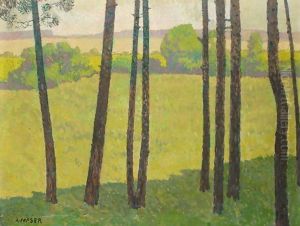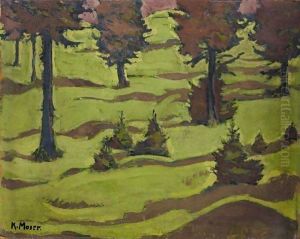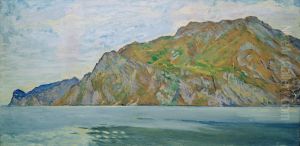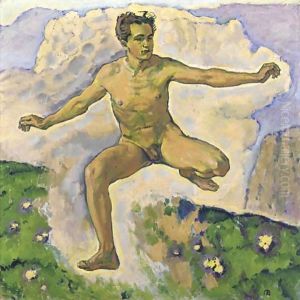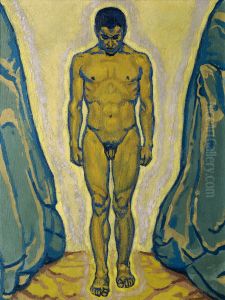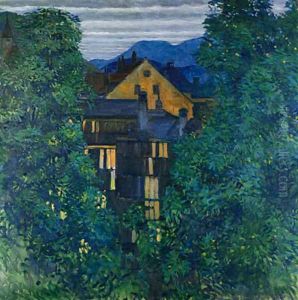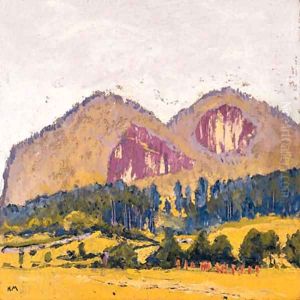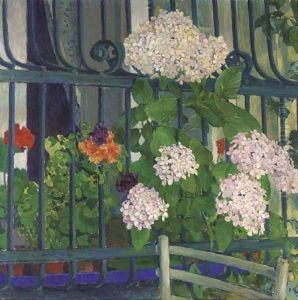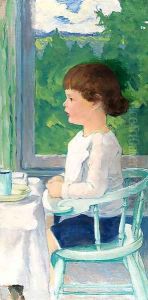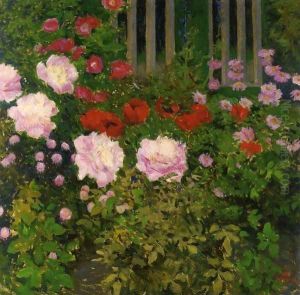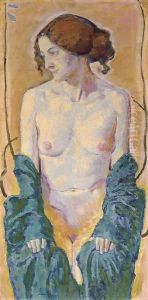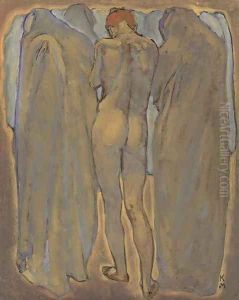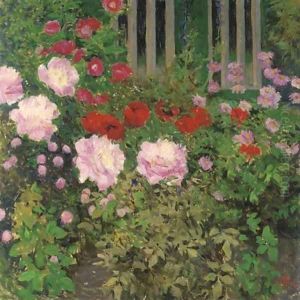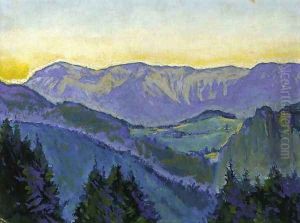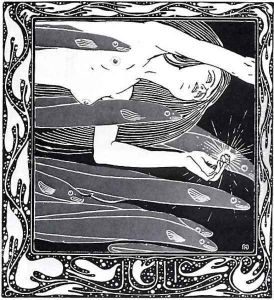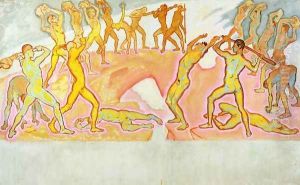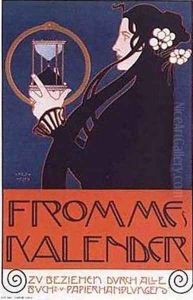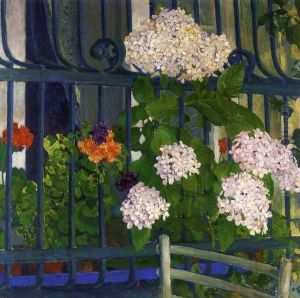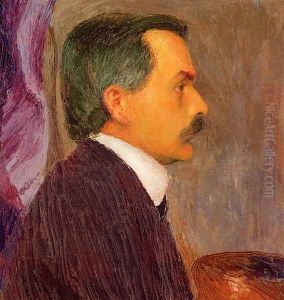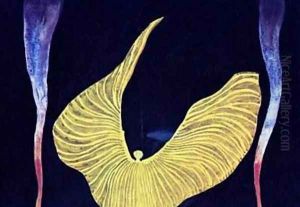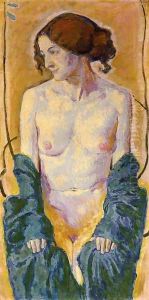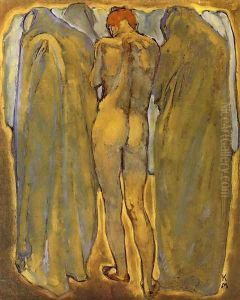Koloman Moser Paintings
Koloman Moser, born on March 30, 1868, in Vienna, Austria, was an influential Austrian artist who played a pivotal role in the development of the Viennese Secession, a movement that sought to break away from the traditional academic art of the time. Moser studied at the Wiener Akademie and the Kunstgewerbeschule, where he was influenced by his teachers, such as the painter Franz Matsch and the architect Otto Wagner.
Moser's early work was rooted in illustration and graphic design, where he demonstrated a keen sense for aesthetics and a mastery of line and ornamentation. His style evolved to incorporate the geometric and linear expressions that characterized the Jugendstil, the German and Austrian version of Art Nouveau. He became a founding member of the Vienna Secession in 1897, along with other notable artists and architects like Gustav Klimt and Josef Hoffmann.
Together with Hoffmann, Moser established the Wiener Werkstätte in 1903, an arts and crafts workshop that had a profound influence on the design of furniture, textiles, and household objects. The Wiener Werkstätte was committed to high-quality craftsmanship and was instrumental in promoting the philosophy that everyday objects should be both functional and aesthetically pleasing.
Throughout his career, Moser designed a wide range of art pieces including glassware, ceramics, jewellery, and interiors, as well as posters, stamps, and other graphic works. His designs often featured stylized, natural forms and were marked by their simplicity and elegance. Moser's contribution to the visual arts was significant in shaping the modernist movement in Vienna and beyond.
Tragically, Moser's life was cut short by illness, and he died on October 18, 1918, in Vienna. Despite his relatively brief career, his work left a lasting legacy and continues to be celebrated for its innovation and beauty.
